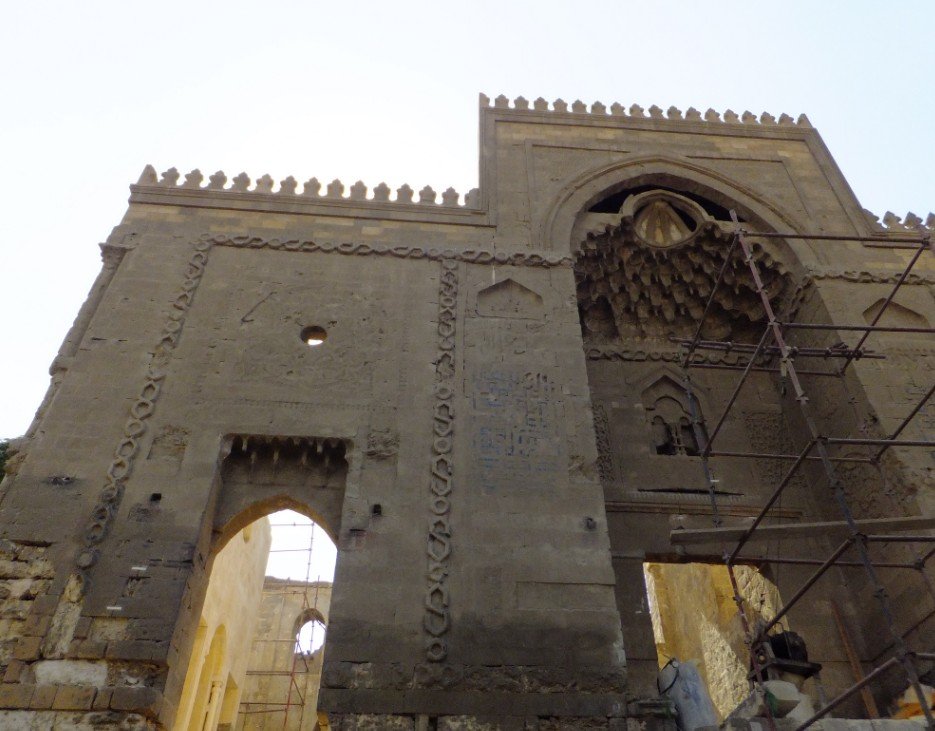In the heart of Cairo, a major restoration project is breathing new life into the rundown Darb al-Labbana neighborhood, tucked below the ancient Saladin Citadel. As of November 2025, workers are carefully taking apart old buildings and rebuilding them with original materials to save historic facades while adding modern upgrades like plumbing and electricity.
This effort marks a key step in Egypt’s push to protect its rich past amid growing urban challenges. The project, led by local experts, aims to make the area livable again without losing its centuries-old charm.
Project Details and Methods
Teams of restorers started the work in recent months, focusing on a district that dates back hundreds of years. Many buildings had crumbled over time, with about half fully destroyed and others barely standing.
Experts number each stone and brick from the old structures before rebuilding. This careful process keeps the original look while fixing weak foundations.
The neighborhood sits right under the Saladin Citadel, built over 800 years ago. It once linked to a historic hospital from 1420, adding to its cultural value.
Modern touches include new sewer systems, water lines, and power grids. These updates make homes safe and comfortable for residents who will return.
Temporary housing or payments help families during the work. Officials say this model could spread to other old parts of Cairo.

Why This Restoration Matters Now
Egypt faces pressure to preserve its heritage as cities grow fast. In 2025, tourism bounced back strong, with millions visiting sites like the pyramids and citadels.
This project ties into larger plans for Historic Cairo, a UNESCO World Heritage site. It follows earlier efforts, like the 2021 push to revive crumbling areas.
Local leaders see it as a way to boost the economy. Restored spots could draw more visitors and create jobs in crafts and tours.
Challenges include balancing old and new. Some worry about losing the area’s unique feel, but planners promise to keep street layouts from Napoleon’s era maps.
Recent events, such as the opening of a new crafts school in the district, show community involvement. This school trains people in traditional skills, linking past and future.
Key Features of the Darb al-Labbana Area
The district holds special historical elements that make it worth saving. Here are some standout aspects:
- Ancient Layout: Streets follow patterns from the 18th century, offering a glimpse into old city planning.
- Connection to Landmarks: It borders the Bimaristan al-Mu’ayyad hospital, a key site from the Mamluk period.
- Cultural Mix: The area blends Islamic architecture with influences from various eras, including Ottoman times.
- Community Role: Once home to traders and pilgrims, it served as a busy hub near the citadel.
These features highlight why experts picked this spot for revival.
Challenges and Future Plans
Not everything has been smooth. Funding comes from government funds and international groups, but costs can rise with unexpected finds like hidden artifacts.
Weather and urban decay add hurdles. Cairo’s hot climate speeds up wear on old stones, requiring special care.
Looking ahead, officials plan to apply lessons here to five other areas in Historic Cairo. This could transform neglected zones into vibrant communities.
A table below outlines the main phases of the project:
| Phase | Description | Timeline |
|---|---|---|
| Assessment | Survey damage and plan rebuilds | Early 2025 |
| Dismantling | Take apart structures, label materials | Mid-2025 |
| Reconstruction | Build new with old materials, add utilities | Late 2025 onward |
| Resident Return | Move people back, open to public | 2026 expected |
This structured approach ensures steady progress.
Experts predict the full project could wrap up by 2026, setting a standard for urban renewal in Egypt.
Impact on Local Life and Tourism
Residents share mixed feelings. Some welcome the changes for better living conditions, while others miss the old ways.
One local artisan said the work revives forgotten crafts, creating pride in the community.
For tourists, the restored district could become a new draw. It offers walks through history, close to major sites like the citadel.
Egypt’s tourism ministry reports a 15 percent rise in visitors this year, fueled by such projects. This ties into global trends where people seek authentic cultural experiences.
Overall, the revival promises to blend heritage with modern needs, benefiting both locals and visitors.
What do you think about this restoration effort? Share your thoughts in the comments and spread the word to friends interested in history and travel.
